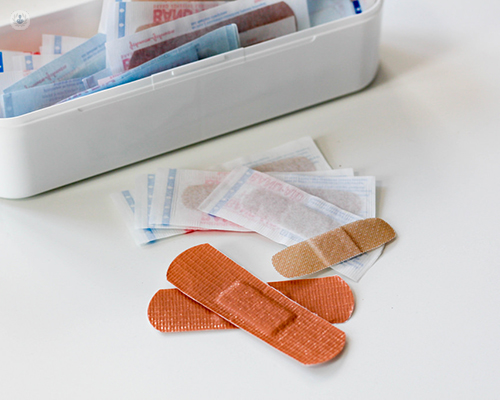

What are warts?
Warts are hard growths that can occur in various areas of the body, caused by a viral infection. They are more frequent in children and teenagers and are usually benignant formations (not cancerous ones). Warts aren’t normally painful. Healing takes from a few weeks to six months with adequate treatment.

There are several types of warts. The most common ones are:
- Common warts: these usually occur on the fingers, hands, elbows, and knees;
- Flat warts: most common on the face, arms, and knees;
- Plantar warts: they are usually found on the soles of the feet. Plantar warts can be painful, as they are continuously rubbed and under pressure;
- Mosaic warts: these commonly occur under the toes;
- Filiform warts: thread- or finger-like warts often occurring on the face;
- Condylomas or genital warts: sexually transmitted warts, most common in the genital area.
Prognosis
Warts are usually innocuous and heal after a couple of weeks. However, in some cases they should be removed to avoid potential complications (such as skin melanoma).
What are the symptoms?
Warts can appear weeks or months after contagion. They are usually rough and fairly small growths of variable shape. In some cases, small and dark dots can be seen within a wart.
Although is not common, warts can cause pain, itching and bleeding.
How are they diagnosed?
A dermatological examination with a specialist is usually enough to confirm the presence of warts. Your doctor may also request a skin biopsy: in that case, the wart is removed and sent to a laboratory for analysis.
What causes them?
Warts are caused by the human papilloma virus (HPV). There’s a higher chance of contagion if your skin is damp or wet, or if you have a small lesion (such as a cut) on your skin. Warts can be transmitted in the following ways:
- Contact with the skin of somebody who has HPV;
- Contact with contaminated surfaces (the floor of a pool, common showers, at the gym);
- Sharing personal hygiene objects, such as towels or razors;
- If you already have a wart, you may spread it to other areas of your body by touching it.
How can they be prevented?
You should:
- Use rubber flip flops in the changing room and common showers at the gym;
- Thoroughly disinfect lesions of the skin;
- Wash your hands multiple times a day.
If you have a wart, you should cover it with a plaster when going to higher-risk places (such as the pool or the gym) to avoid spreading it to other areas of your body or to other people. You should also avoid touching the wart and sharing your personal hygiene objects.
How are they treated?
Warts usually disappear on themselves in 6 to 24 months, especially in children. However, this is not always the case for adults, so if you have a wart you may need to have it removed, because autonomous healing could take much longer.
The following treatments are not always conclusive, as the wart could be recurrent or occur in other areas of your body. Should new warts appear, even if you’ve been treating them, this could mean that the viral cells of the old warts have spread to other parts of your body. In this case, you should see your dermatologist again.
The most common treatments are:
- Cryotherapy: liquid nitrogen is used to freeze the warts. This procedure can be carried out at home, with products that can be bought at your local pharmacy;
- Cantharidin: by applying this compound directly on the wart, it will die out and the doctor will remove it after a couple of days;
- Electrodesiccation: electricity is used to heat up the affected area until the wart dies. This procedure is often associated with curettage, which consists in removing the wart by cutting it with a scalpel or by scraping it off with a spoon-like instrument;
- Laser treatment: this procedure ensures a highly precise intervention on the affected area, without compromising neighbouring tissues;
- Keratolysis: this exfoliation method destroys the wart, by using specific medications which can also be applied at home.
Which doctor should I talk to?
Dermatologists are generally the specialists who treat and remove warts.
